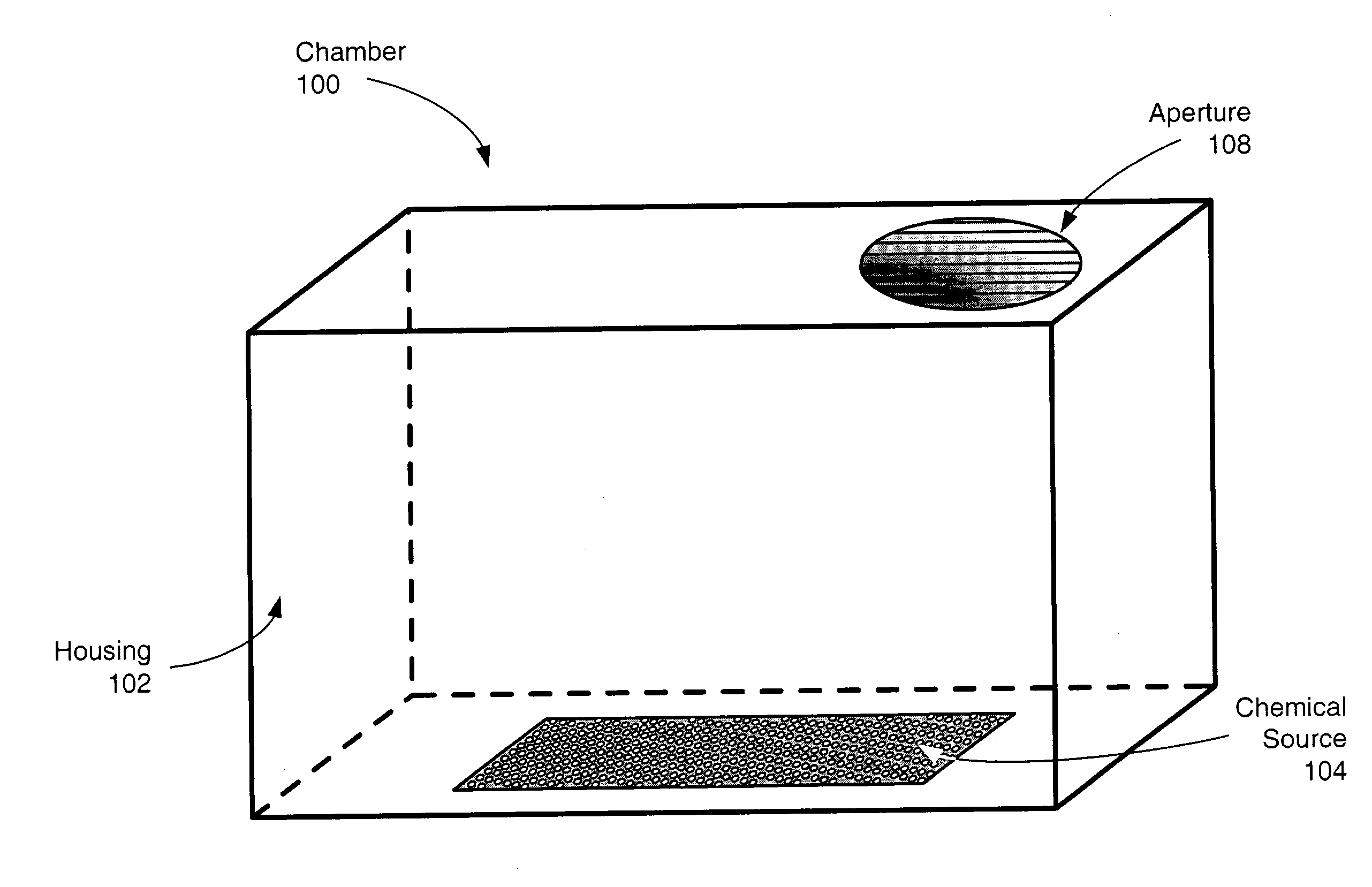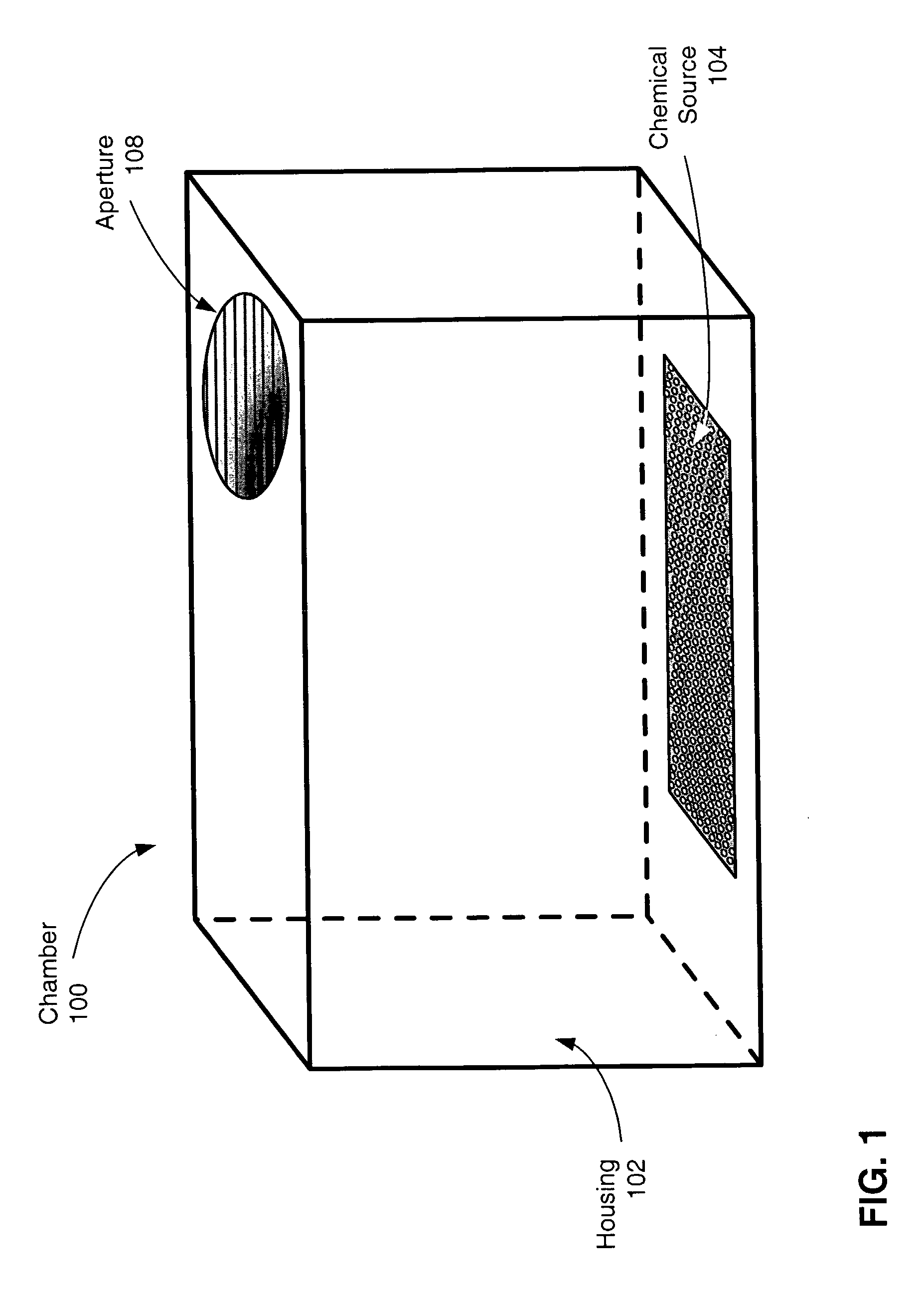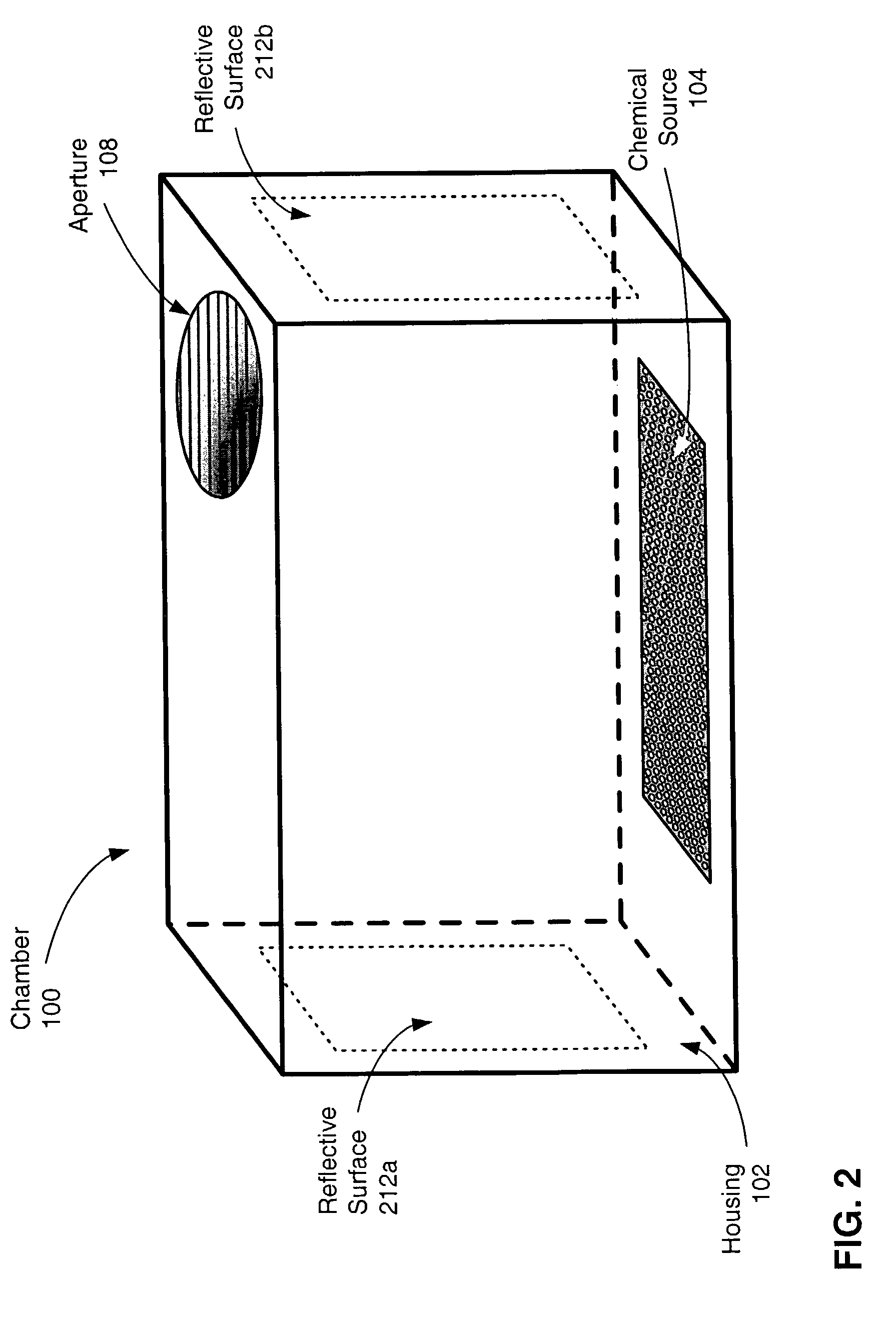System for trapping insects
a trapping system and insect technology, applied in the field of trapping insects, can solve the problems of reducing grain marketability, corroding damage to sensitive equipment, and financial hardship for many farmers
- Summary
- Abstract
- Description
- Claims
- Application Information
AI Technical Summary
Benefits of technology
Problems solved by technology
Method used
Image
Examples
Embodiment Construction
[0024]The present invention provides a method and system for attracting and trapping various pests without the use of harmful pesticides and similar chemicals. Alternatively, the present invention can be used to repel pests. It is believed that the present invention functions better than other insect traps because olfaction in animals (for example, insects) is based on electromagnetic signals emanating from molecules.
[0025]The prevalent theory regarding olfaction is the “lock and key hypothesis.” This hypothesis is taught in virtually all high schools and universities, and states that a given molecule fits into a biological receptor. This binding to the receptor can be either permanent or semi-permanent in nature. Once the molecule binds with the receptor, a nervous impulse propagates down the axonal region of a neuron, if not several neurons, where the impulse is eventually received by an appropriate decoder, such as the brain.
[0026]An alternative hypothesis concerning olfaction, s...
PUM
 Login to View More
Login to View More Abstract
Description
Claims
Application Information
 Login to View More
Login to View More - R&D
- Intellectual Property
- Life Sciences
- Materials
- Tech Scout
- Unparalleled Data Quality
- Higher Quality Content
- 60% Fewer Hallucinations
Browse by: Latest US Patents, China's latest patents, Technical Efficacy Thesaurus, Application Domain, Technology Topic, Popular Technical Reports.
© 2025 PatSnap. All rights reserved.Legal|Privacy policy|Modern Slavery Act Transparency Statement|Sitemap|About US| Contact US: help@patsnap.com



